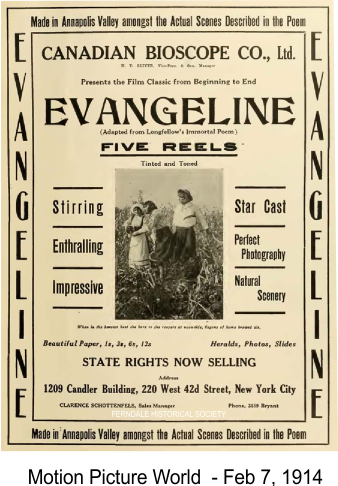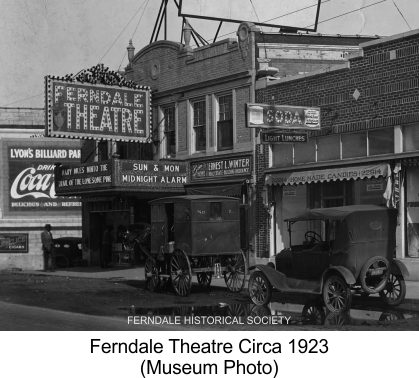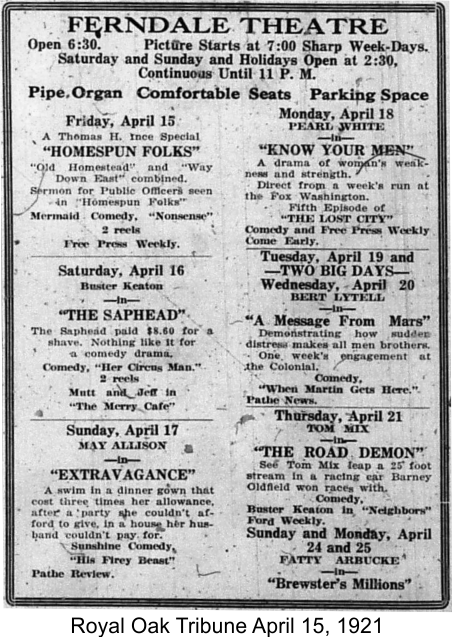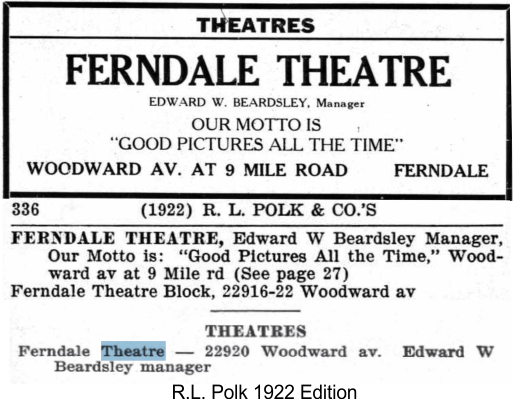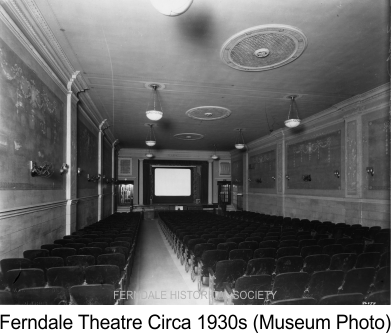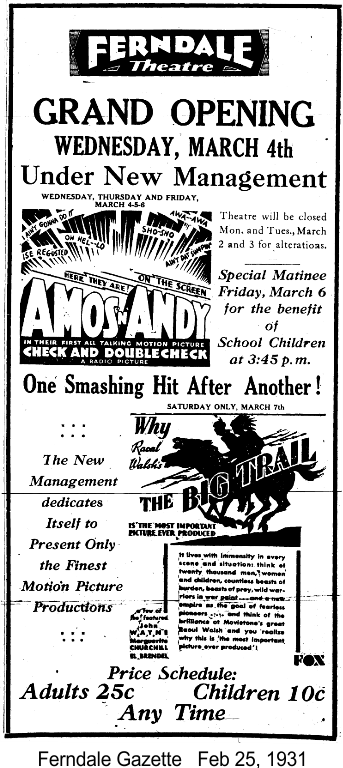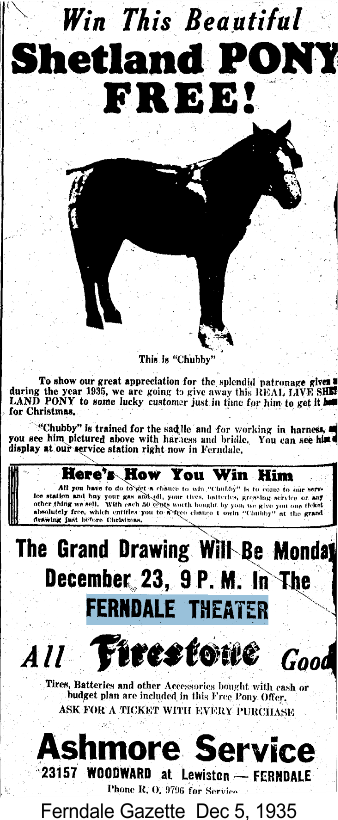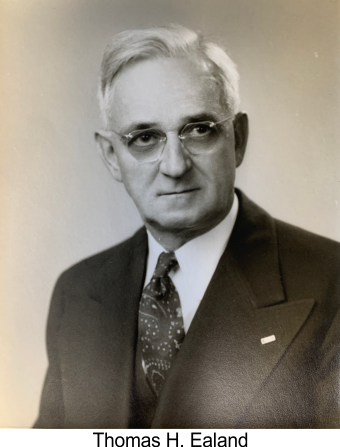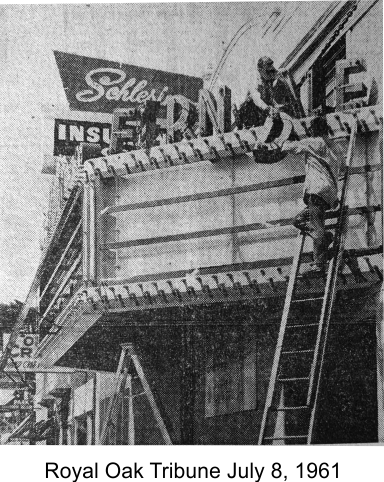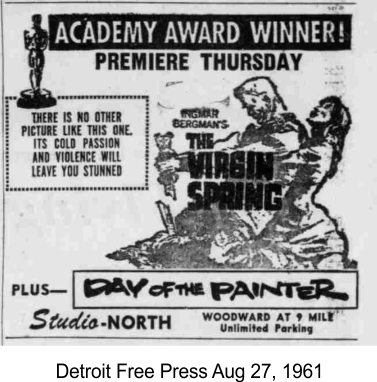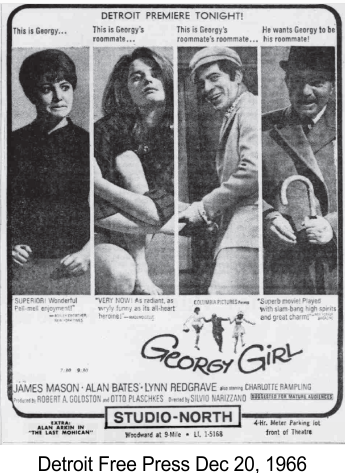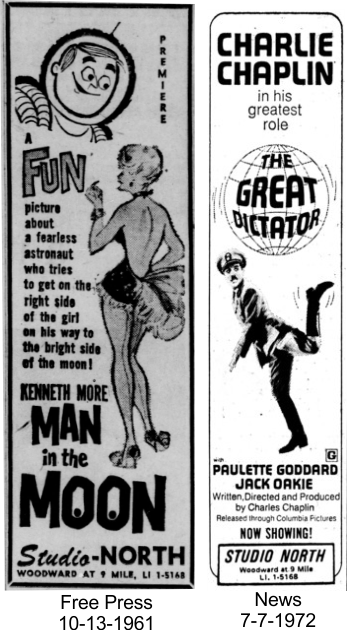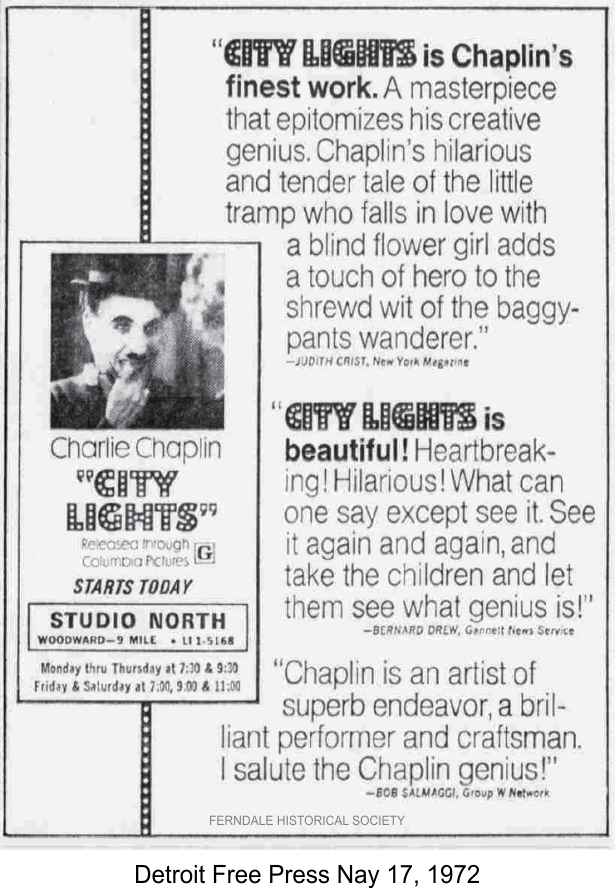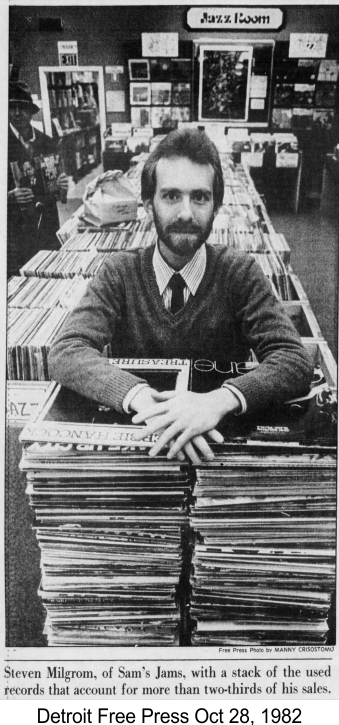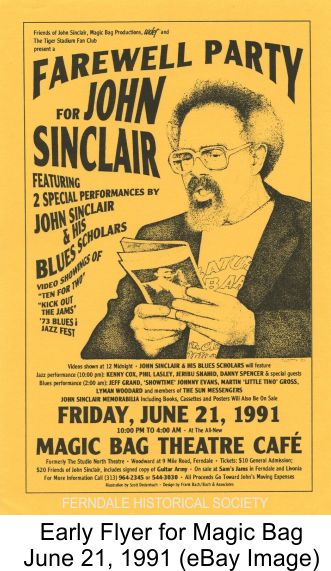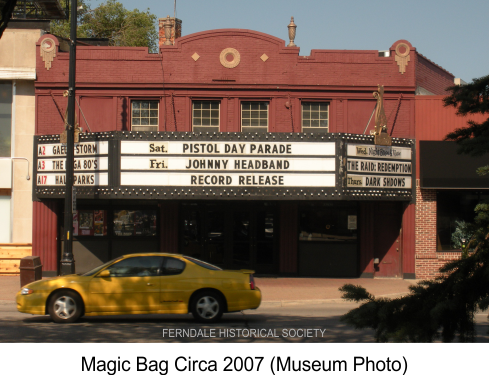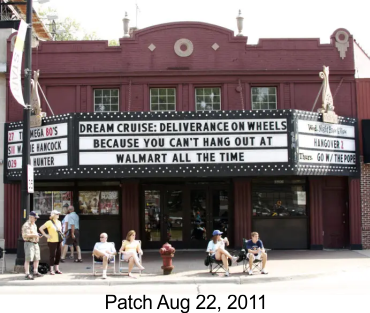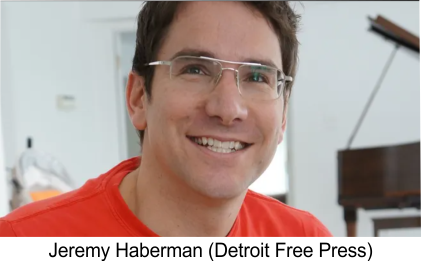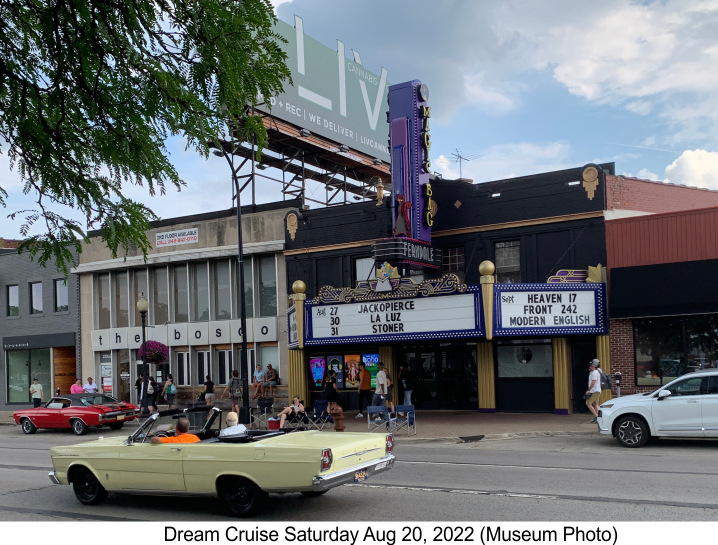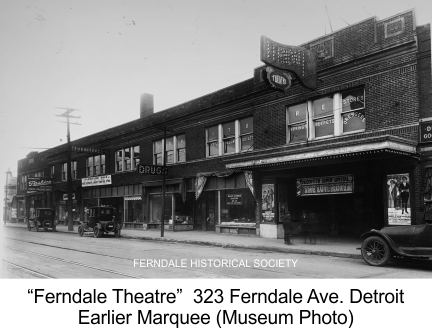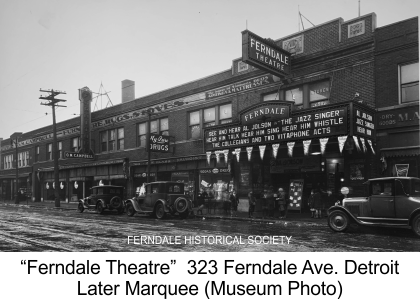
THE FIRST DECADE 22920 Woodward Avenue in Ferndale has a fascinating history
spanning more than 100 years. As of Summer 1920
there were no Theatres in Ferndale, so the Baptist Church
showed selected movies to an eager audience for a small donation. The village President, (Fred E. Gordon at that time) wanted to “set the standard in screen entertainment so that when commercial houses are opened here they will be conducted on an unusually high moral plane.” Ferndale was “the first village on record in the country, it is said here, where such an idea has been put into execution”. The first such movie shown was the screen version of Longfellow’s poem, “Evangeline”, plus a two-reel comedy and travel pictures.
We have not yet found any “Grand Opening” announcements for the theatre, but do have a full page ad from the Ferndale Saturday Star newspaper for “Lying Lips”. Below that image was a listing for all upcoming shows starting with “Down Home” on April 1, 1921.
The theatre was listed in the high school paper on Dec 19, 1921 offering to give away "a ton of coal".
First R.L. Polk Directory listing found was in 1922.
On Saturday January 21, 1922, E.W. Beardsley took over as Manager after Mr. Rowley “vanished some months ago and has not been seen since”. Newspaper reports noted; “Although the theatre is less than a year old, and in no need of remodeling, Mr. Beardsley has closed the playhouse for a week until he can make certain alterations he deems necessary to bring it up to a plane of perfection that will cause it to be unexcelled by any theatre of like size in Michigan.” The article continues;“For opening day Mr. Beardsley has procured the big seven-reel feature ‘the Heart of the North’. This will be shown Saturday in conjunction with good comedy, Fox News and Mutt and Jeff. As a special feature Saturday and Sunday Miss Joy Marshall and her famous Quaker Girl Jazz band of Detroit will furnish music.”
Most of the drama was on screen for the rest of the 1920s. There was a police arrest at the theatre of the “moving picture operator” for having run off with the wife and family of a Pennsylvania man. In 1928 then theatre Manager, William Kimmel, was arrested and charged with creating fire hazards which he eventually rectified.
DEPRESSION & WAR YEARS In Feb 1931, Thomas H. Ealand purchased the theatre from Mrs. Elizabeth Murphy acting on behalf of the Ferndale Amusement Company. News reports called the theatre “a dump” requiring renovation. Over $3,000 of new seats plus a new sound system were installed which was to “make our own picture theatre comfortable – as comfortable as the Michigan or Fox”. It is at this time that we believe the pipe organ was moved to St Luke’s Episcopal Church on West Lewiston in Ferndale.
The grand re-opening of the Ferndale Theatre was on March 4, 1931 featuring Amos & Andy in their first all-talking moving picture “Check & Doublecheck” Adult tickets cost 25 cents and 10 cents for children.
Mr. Ealand was a well-respected and generous man in Ferndale. Helping the community weather the depression by offering free entertainment for children and others. He marketed the theatre by among other things, hosting the raffle of “Chubby” a Shetland pony sponsored by local Firestone dealers at Christmas in 1935.
He was recognized by the US Treasury Department for a record sale of war bonds. His works earned him a place in Ferndale’s “Book of Golden Deeds”. He was the third person to receive such an honor. Mr. Hough, the first winner two years earlier, was in attendance at the celebration dinner.
In 1946 Mr. Ealand sued the new Radio City Theater owners as well as United Artists, Paramount, Loew’s, and Warner Brothers with violating anti-trust laws. There were a series of bitter disputes between the Ferndale Theatre and Radio City Theater for years. We have yet to find news of any type of settlement, but a few years later the two theatres were working closely on several fund raisers and holiday shows. But in 1950 he won a city council debate to keep quiz shows out of Ferndale theaters that the Radio City was proposing as a marketing promotion.
ART HOUSE TO GRIND HOUSE After Mr. Ealand’s death the theater took on a slightly more sinister theme. In June 1961 William Flemion and Ed Schuman leased the theatre from Herbert Ealand. The marquee was removed and replaced as the theatre became Studio North in July 1961.
Initially it was managed by Arnold S. Hirsch, former movie reviewer from the Detroit Times. It opened in August 1961 with a showing of Ingmar Bergman’s ‘Virgin Spring’ featuring Max von Sydow.
The theatre showed art house films of the 60s-70s and was part of a small chain of theatres including “Studio-Midtown” near the Wayne State campus at 711 W. Canfield and the “Studio” at Livernois & Davison.
The theatre enjoyed success with fans of "serious cinema" watching films like Truffaut's "Day for Night" and Charlie Chaplin films. Plus other art house fare like "Boccaccio's Decameron", "Georgy Girl", and "Harold and Maude".
Harold and Maude became a "cult" film according to then theatre Manager Ross Cacavale. It ran over 64 weeks generating much needed revenue. A November 18, 1973 Detroit Free Press article interviewed fans who had seen it dozens of times.
Unfortunately art house film customers moved from Studio North to an actual art house. In 1974 other theatres in the "Studio" chain had a reputation for showing adult films. Movie distributors were reluctant to keep providing art house films to Studio North. Plus, the Detroit Institute of Arts (DIA) launched their Detroit Film Theater in 1974 under the "inspired direction" (per a June 9, 1974 Free Press article) of 23 year old Elliot Wilhelm drawing film fans to the their screen to this day.
While Detroit had requirements to have all movies reviewed by the Police Department’s “Obscenity Detail”, Highland Park and most suburbs had no such requirements. So X rated movies appeared in more and more suburban movie houses. Ferndale followed Detroit’s lead on what films were acceptable. The Studio Theatre chain manager worked with Ferndale police to maintain a level of acceptance. Marquees often caused uproar when they use lewd language that was prohibited in newspaper ads. In August 1967 the Detroit Free Press did a series of articles on movie censorship that is quaint to read today.
The first case ended in a mistrial on Oct 14 when jurors were unable to reach a verdict. Residents picketed the theatre after it resumed showing the film Oct 20th when the injunction expired. In a related case, Ferndale’s adult theatre zoning ordinance was declared unconstitutional. The ordinance banned adult theatres within 1,000 feet of a residential area. However, there was no property in Ferndale where commercial zones are not within 1,000 feet of a residential area.
The theatre continued to operate, protesters picketed and lawyers filed suits for over 10 years. In 1988 Studio North became “Déjà vu” a nightclub with nude dancing and related entertainment. In May 1989 it was ordered closed by an agreement signed by building owner Herbert Ealand, Studio North President Charles Black, and Oakland County Circuit Judge Steven Andrews. Under the agreement the building must be shuttered for a year, though it could be reopened for non-sexually explicit lawful purposes before then if approved by Judge Andrews. In exchange 14 nuisance cases were dropped. Several other “more explicit” cases were still being prosecuted. Meanwhile, Ferndale’s efforts to create an
‘adult zone’ for such businesses increased the amount of picketing and
petitions as residents objected. Ferndale Police Chief Patrick Sullivan
is quoted as saying he had been fighting the porn business 21 of his
33.5 years as a police officer in the community. He went on to say
“We’re not the type of community that supports this type of activity.
We’ve got 37 churches in Ferndale and our people are law-abiding.”
STEVE MILGROM CREATES THE MAGIC BAG On May 23 1990, Steve Milgrom (Owner of Sam’s Jams since buying
that in April and opening on June 1, 1978), purchased the padlocked
Déjà vu from building owner Herbert Ealand on land contract.
Thus ending nearly 60 years of ownership by the Ealand family,
and the local angst caused by X-rated entertainment. Milgrom, an enthusiastic businessman who lived in Ferndale for 10 years by then, was thrilled to start the next chapter in the historic Theatre. According to a May 16, 1991 Detroit News article, he enlisted Minoru Yamasaki’s architectural firm to design the “luxe gray, white, and black interior” with red theatre seats purchased from a used theatre equipment dealer. He didn’t expect to be able to retain the locally-based Yamasaki Architectural firm, (designers of New York’s World Trade Center) for this renovation. “I didn’t know they did projects this small, but they did it and they loved doing it” he says.
Milgrom, had been hosting concerts in his Sam’s Jams stores for years – said to be the first record store in the country to do so - and a lot of fun! That honed his drive to keep the musicians happy. He “figured if the artists want to play here the people will come” So he installed a “TurboSound” system (said to be “the Rolls-Royce of speaker systems”) in the Magic Bag. Sound-deadening rubber was used extensively to control reverberation, especially on stage. The theatre launched without a liquor license or marquee improvements since money was tight by then. Milgrom had sold his house and mortgaged his stores to invest more than $100k into launch of the theatre.
By then the Magic Bag had a liquor license (obtained in July 1992, transferred from Mike Ilitch's Chuck E. Cheese's location in Ferndale that had closed) and was thriving. A historic list of concerts is available HERE Milgrom's work resulted in the venue being identified by Details magazine (and others) as “one of the best clubs in the country”. The theatre was temporarily closed from July-Sept 1994 to allow everyone a vacation and to regroup.
JEREMY HABERMAN'S IMPROVEMENTS In March 1996 Royal Oak resident Jeremy Haberman bought majority interest in the Magic Bag from Steven Milgrom. It closed for the first 2 weeks of April to replace theatre seats with tables & chairs to make sure everyone had a good view of the stage. It reopened on April 13, 1996 with blues legend Junior Wells as the first Saturday headliner. Plans were to hold Sunday, Monday, & Tuesday for private events.
Movies on Wednesday, local rock acts on Thursday,
blues & jazz on Friday and headliners on Saturday. Haberman was a
musician himself and had worked with Milgrom at Sam’s Jams. Meanwhile, in 1998, Steve Milgrom opened "Mr Music Head Gallery" on Melrose moving later to Sunset Boulevard in LA. It is still a gallery representing artists and photographers, drawing from rock 'n' roll, jazz, funk, R&B and other genres. Steve was pleased with what he was able to achieve by turning the historic Magic Bag around and knew it was in good hands with Jeremy. On July 31, 2001 Jeremy Haberman bought out Steve Milgrom’s remaining interest in the theater and the Magic Bag was going strong.
Jeremy Haberman sold the Magic bag in 2013 and died of lung cancer at age 42 on Dec 5, 2014. David Coulter, Ferndale’s Mayor at the time noted “Jeremy helped transform not only a theatre but also a community with his passion and hard work.”
Although a non-smoker, he had been diagnosed 5 years earlier in 2009 and given a year to live. He kept his illness a secret as much as possible and beat the odds. Working with his Brother Daniel, they lead the campaign to enact a statewide smoking ban in public places citing the threat to employees of such venues. The Magic Bag, and related business the Bosco, were among the first establishments to voluntarily go smoke free in 2009. In December 2009 the bill was signed into law by then Governor Granholm, the same week Jeremy was diagnosed.
Records show that Carey Denba purchased majority interest in the Magic Bag in 2014 from Daniel Haberman and Carey owns the theater to this day. Per news reports he has had to overcome Covid personally as well struggle to keep the business going during the pandemic. As of Spring 2023, Covid is still a threat but it seems every musical act is touring to make up for lost ground and all musical venues, including the Magic Bag, are packed!
CONCLUSION On Nov 5, 2015 a dream of Steve Milgrom, Jeremy Haberman, Carey Denba, and others was realized with the unveiling of the Magic Bag’s new marquee which had been installed Nov 3rd. The Marquee ironically uses a tall design unlike that seen at this location, but similar to the Radio City marquee, a former competitor across the street. Along with the decorative marquee, the facade of the building was updated and honored the long history of this theatre. At the same time it projects the vibrancy and excitement of this Ferndale business into the future! So like all the dramas that played out in this venue, the story had countless plot twists and interesting characters. Ferndale is fortunate to have this 100+ year old business and structure still contributing to area enjoyment. We wish this venue another successful 100 years!
THE "WRONG" FERNDALE THEATRE
ISSUES STILL BEING RESEARCHED.....
2) Looking to confirm the original Architect for the theatre.
A 1992 thesis (HERE) about the theater designs of C. Howard Crane
by Lisa Maria DiChiera lists “Ferndale Theatre” twice
(Job # 276 & # 305 ) with no detail. The theater's facade & finials, as well as the early interior, look very much like others shown in the thesis. The theatre in Ferndale is more decorative that the one in Detroit. The age and fact that a "Ferndale Theatre" was listed twice in his job list leads me to believe this was a C. Howard Crane design. But it is yet to be proven........
|
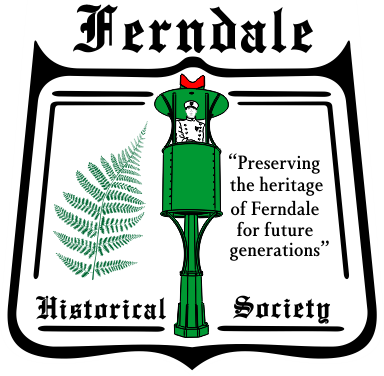
Unauthorized use or duplication of this material without expressed
and written consent from the Ferndale Historical Society is prohibited.
If you have comments, changes, or corrections about this topic
please email info@ferndalehistoricalsociety.org attention Gregg.
Revised: Oct 14, 2024
